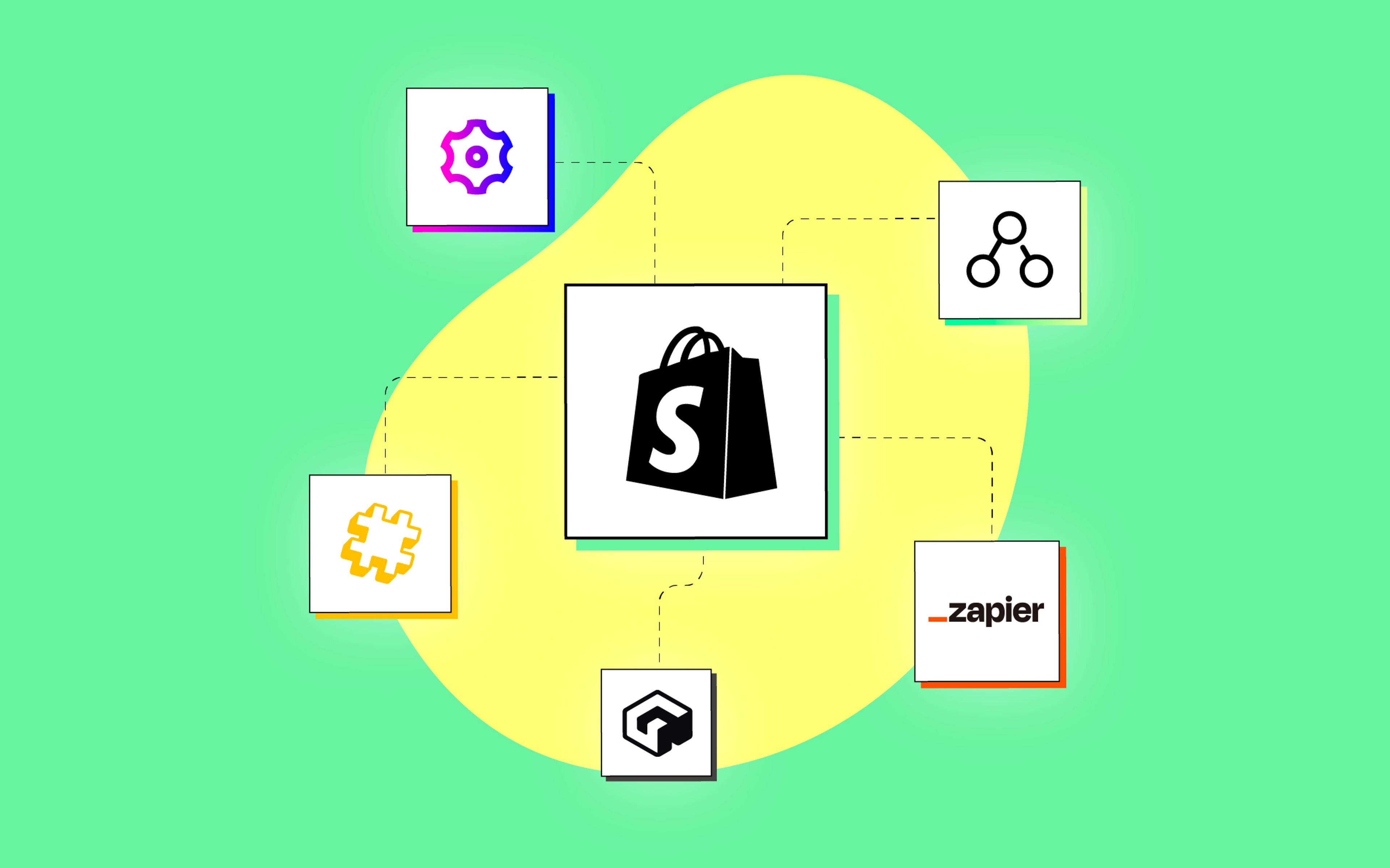In the complex world of e-commerce technology, Shopify stands out as a beacon for businesses eager to establish or expand their online presence. Its user-friendly interface, coupled with a vast ecosystem of apps and integrations, has made it the go-to platform for merchants. Still, the convenience offered in the off-the-shelf package is not enough for everyone.
While Shopify's app store provides many easy-to-install solutions that promise quick wins, the reality is that the more complex your business needs, the less likely you'll find an app that fits the requirements. And, as businesses grow and operations become more complex, the limitations of a simple Shopify build become more and more apparent until they bring businesses to a crossroads: either simplify operations to fit into Shopify’s boundaries, or heavily customize Shopify to play by their rules.
The former path might be acceptable and sometimes even advisable for smaller stores. Building complex Shopify customizations requires significant resources and can be a source of technical debt; as such, these projects should always be justified by a clear and compelling ROI.
But for brands in the upper midmarket/enterprise segment, building more complex automations and customizations on top of Shopify often makes perfect sense: these companies have complex internal workflows, custom tooling, and nuanced policies, and their e-commerce platform must learn to adapt and play nice with the existing ecosystem.
Luckily, Shopify’s ecosystem comes with rich tooling designed to create custom apps and integrations. In this post, we'll delve into some of these tools. More specifically, we’ll cover Shopify Flow, Zapier, e-commerce iPaaS Solutions, Gadget, and Greenfield Apps, exploring their pros and cons, ideal use cases, and some examples of the customizations they enable.
Shopify Flow
Shopify Flow is a tool built into Shopify that allows creating automations without leaving the platform. It's a basic yet powerful way to respond to events generated within your online store (e.g., a new order being placed) with a set of actions (e.g., sending an email to your staff).
Pros:
- Seamless Integration: It’s designed specifically for Shopify, ensuring a smooth integration with your store. It’s Included in Shopify for free; no need to pay for extra software.
- User Friendliness: Shopify Flow comes with a visual workflow builder that requires no coding, making it accessible to non-technical users.
- Third-Party App Support: Shopify apps can extend Shopify Flow by adding their own triggers and actions, which expand the possibilities of the tool. This functionality is only available to Shopify Plus merchants.
Cons:
- Complexity Limitations: While powerful, Shopify Flow does not always cater to highly intricate integration needs that require custom coding.
- Partial Support for External API Calls: You can create an action that performs an API request to an external service (if you’re on the Shopify, Advanced, or Plus plan), but you cannot use the data you receive in any way. Shopify has committed to solving this in 2024.
- Partial Support for External Emails: At the moment, it's not possible to send emails using Shopify Flow, except for emails to staff members or as part of email marketing automations. You cannot send transactional emails to your customers or anyone else.
Ideal Use Case: Shopify Flow is your go-to for automating operational tasks within Shopify's ecosystem, particularly if you're a Shopify Plus user and can use all of the functionality it offers. It's ideal for businesses looking to streamline processes like tagging high-value customers for exclusive offers or automating restock notifications.
Example Customization: Automating the tagging of VIP customers based on their spending history and automatically enrolling them in an exclusive loyalty program.
Zapier
Zapier can be a good alternative to Shopify Flow, if you find its limitations unbearable. Via the Zapier app for Shopify, you can connect Zapier to your Shopify store and pick from an extensive list of triggers and actions to build your automation.
Pros:
- Wide Range of Integrations: Zapier can connect Shopify with over 3,000 web services, facilitating many different kinds of automations.
- No Coding Required: Zapier’s interface is similar to Shopify Flow, but offers even more power by allowing you to build more complex, more robust automations.
- Rapid Deployment: You can quickly set up new integrations and automations without the time and cost associated with custom software development.
Cons:
- Pricing: Zapier’s costs can quickly escalate as you increase your usage of the platform and build more complex workflows.
- Dependent on Third-Party Connectors: Even though it boasts more integrations than Shopify Flow, Zapier still relies on the availability and limitations of third-party connectors.
Ideal Use Case: Zapier is best suited for businesses that find Shopify Flow too limiting, but still need to build automations or integrate Shopify with other platforms quickly and without custom development.
Example Customization: Automatically adding new Shopify orders to a Google Sheets spreadsheet for advanced reporting and analysis.
E-Commerce iPaaS
Integration Platform as a Service (iPaaS) solutions connect your online store with a variety of other systems, such as ERP, POS, and warehouse management systems (WMS), facilitating the automation of business processes across platforms. There are plenty of iPaaS solutions that integrate with Shopify–our favorite are Patchworks, VL OMNI, High Cohesion, and Pipe17.
Pros:
- Connector Ecosystem: Unlike Zapier, which is a generic automation platform, e-commerce iPaaS platforms specialize in connecting e-commerce platforms like Shopify with CRM, ERP, POS, and WMS systems.
- Data Integrity: E-commerce iPaaS platforms were designed to ensure data consistency across platforms, reducing synchronization errors and improving operational efficiency.
- Bespoke Support: with most iPaaS platforms, you can typically engage their customer support or professional services team to build connectors that are not already available.
Cons:
- Integration Complexity: Setting up more sophisticated connectors and automations may require technical expertise to configure and manage.
- Cost: The investment required to use an iPaaS reflects its enterprise-level capabilities, making it more suitable for larger businesses with complex needs. Most platforms will charge you per connection or event (e.g., a new product being created).
Ideal Use Case: E-commerce iPaaS solutions are ideal for medium-to-large businesses that require robust, real-time integrations between Shopify and other enterprise systems.
Example Customization: Integrating Shopify with an ERP system to automate order management, inventory management, and financial reporting, streamlining operations and reducing manual errors.
Gadget
Gadget is a powerful full-stack serverless platform that allows building and hosting custom Shopify Apps, skipping all the repetitive tasks and accelerating the development cycle of your custom app. Through Gadget, you can accomplish all the automations and integrations that are not possible with off-the-shelf apps and integrators.
Pros:
- Rapid Development: Gadget offers a rapid development environment for Shopify apps, reducing time to market and human error.
- Scalability: Gadget is built to handle high volumes of data and traffic, making it suitable for growing businesses.
- Developer-Friendly: Gadget provides advanced tools and resources tailored for developers who need to create sophisticated apps, like Shopify API version management and pre-built React frontends that are compatible with Shopify’s security policies.
Cons:
- Learning Curve: Developing with Gadget requires a significant amount of technical knowledge, making it hard to access for non-developers.
- Cost: Custom apps may involve higher initial development costs compared to simpler integration approaches.
- Single Environment: As of today, multi-environment applications (staging+production, for example) are not supported. However, Gadget claims the feature will be released soon.
Ideal Use Case: Gadget is a powerful choice for tech-savvy teams looking to build a private Shopify app for their brand as quickly as possible.
Example Customization: Creating a custom loyalty program that’s not supported by any off-the-shelf loyalty apps for Shopify.
Greenfield Apps
When none of the tools above is capable of fulfilling our complex business requirements, we are left with one extra solution, probably the most flexible one: building a custom Shopify app completely from scratch. We call these “Greenfield Apps.”
Greenfield Apps can extend the functionality of your Shopify store in whatever way you want, as long as your desired workflow is supported by Shopify’s APIs.
Pros:
- Malleability: Greenfield apps can be designed to meet your exact business requirements, offering unparalleled flexibility.
- Direct Integration: You can use greenfield apps to interact with all of Shopify's APIs, enriching your online store with custom business logic, Storefront and Admin UI components, and complex automation and integration workflows.
- Technical Scalability: Greenfield apps can grow with your business, accommodating new features and processes as needed, without financial or technological lock-ins.
Cons:
- Development Cost: Custom development is typically more expensive and time-consuming than pre-existing solutions.
- Maintenance Effort: Greenfield apps require ongoing maintenance and updates to ensure compatibility with Shopify's evolving ecosystem. \
Ideal Use Case: When your business requires unique functionality that cannot be addressed with existing apps or tools, greenfield Shopify apps provide a solution tailored specifically to your needs.
Example Customization: A bespoke app that provides a UI for a marketplace’s vendors to update product prices and availability, and instantly propagates those updates across multiple warehouses within your Shopify storefront.
Complexity Is Not Always a Bad Thing
While Shopify's app ecosystem offers a solid foundation for run-of-the-mill retailers, expanding beyond these boundaries unlocks new levels of operational efficiency, customization, and customer satisfaction.
When considering your options for customizing your e-commerce store, remember that the right choice depends on your needs, budget, and technical capabilities. Make sure that you’re factoring in all of these elements before committing to a specific solution.
Building custom features and integrations may seem daunting, and might require resources and expertise that you don’t have in-house. But at the end of the day, this growing complexity is often a testament to your brand’s growth and the need to evolve your customer experience.
If you need help launching a custom feature or integration for your Shopify store, feel free to reach out! Our engineering team would love to help you figure out the right solution.



